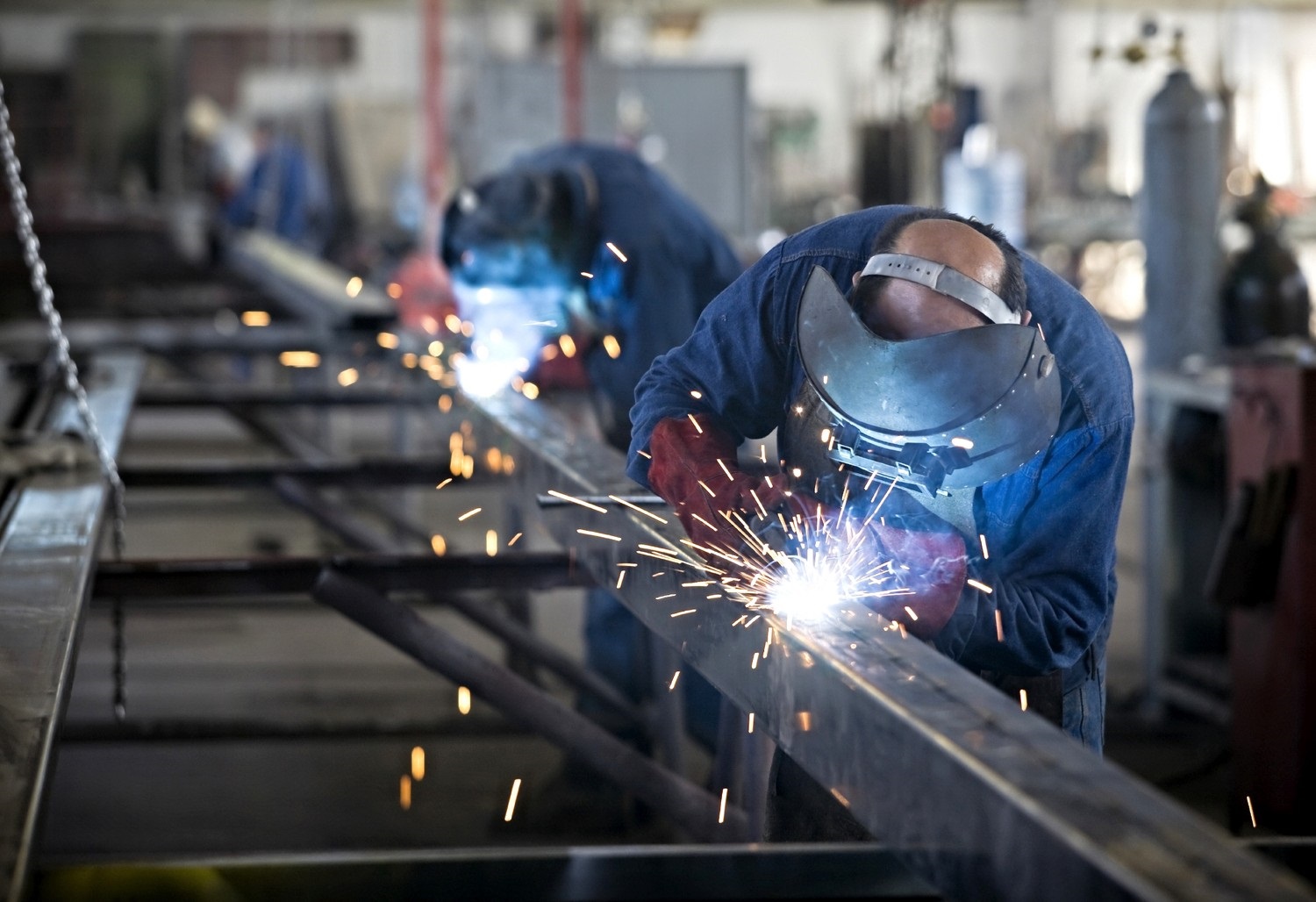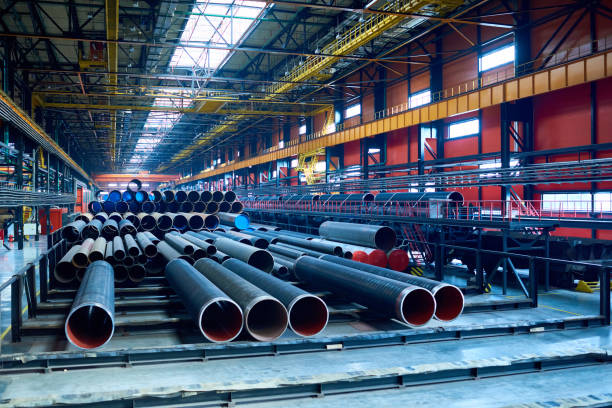Finest Steel Fabricators Melbourne: Transforming Concepts into Fact
Finest Steel Fabricators Melbourne: Transforming Concepts into Fact
Blog Article
Comprehensive Analysis of Cutting-Edge Techniques in Steel Construction Market
As the steel fabrication sector continues to progress, the assimilation of innovative methods has actually ended up being crucial for staying affordable and satisfying the demands of modern-day production criteria. From laser cutting improvements to the usage of robotics and 3D printing in steel production, the landscape of construction strategies is rapidly transforming. With each development bringing its own set of advantages and difficulties, an extensive analysis of these techniques is paramount for companies intending to enhance their processes, boost accuracy, and ultimately, elevate the quality of their steel manufacture output. In this vibrant sector where technology plays a crucial function, understanding the subtleties of these sophisticated methods is not just an alternative yet a requirement for those aiming to create ahead in the ever-evolving world of steel construction.
Laser Cutting Innovations
In the realm of steel manufacture, laser cutting advancements have actually transformed the accuracy and performance of metal shaping procedures. By harnessing the power of focused laser beam of lights, producers can now accomplish unrivaled degrees of precision when reducing with numerous types of metals. This technology enables complex layouts to be implemented with marginal material waste, making it a cost-effective remedy for sectors needing high precision components.
Among the crucial advantages of laser cutting is its capability to manage a large range of materials, including stainless steel, aluminum, and carbon steel, effortlessly. The process creates tidy, burr-free sides, removing the demand for extra finishing actions. In addition, the non-contact nature of laser reducing reduces the risk of product contamination, leading to better final product.
In addition, laser cutting devices can be set to make swift, accurate cuts, dramatically minimizing manufacturing time contrasted to traditional cutting techniques. This rate and accuracy make laser cutting specifically appropriate for mass manufacturing settings where efficiency is paramount. As technology proceeds to breakthrough, laser cutting is positioned to play an increasingly important duty in the steel fabrication industry.

CNC Machining Innovations
The evolution of CNC machining modern technologies has actually ushered in a new age of precision and performance in the steel construction industry. Computer Numerical Control (CNC) machines have actually reinvented steel manufacture by supplying unequaled precision and repeatability in the production process. Alpha reo. Among the essential advancements in CNC machining is the integration of sophisticated software systems that enable real-time monitoring and modifications, resulting in improved productivity and high quality control
Moreover, the growth of multi-axis CNC equipments has permitted for the fabrication of complex steel elements with detailed styles that were formerly testing to create. These makers can perform a vast array of machining procedures, including milling, exploration, turning, and grinding, all with high levels of accuracy.
In addition, the consolidation of automation and robotics in CNC machining has structured manufacturing processes, minimized lead times, and decreased the margin of error. This assimilation of cutting-edge modern technologies not just improves effectiveness however also guarantees regular quality throughout all fabricated steel parts. Finally, CNC machining advancements remain to drive advancements in the steel fabrication industry, setting new requirements for accuracy and performance.
Automated Welding Technologies
Automated welding modern technologies have revolutionized the steel manufacture industry, boosting efficiency and accuracy in the welding process. These advanced modern technologies utilize computer-controlled systems to automate the welding process, bring about higher performance levels and boosted weld top quality. One of the key advantages of automated welding is the capacity to execute complex welds with consistent accuracy, decreasing the possibility of errors and remodel.
Robotic welding systems go to the center of automated welding technologies, supplying unmatched rate and precision. These systems can deal with a variety of welding tasks, from simple to complex, effortlessly (Alpha reo). By using sophisticated sensing units and software, robot welders can adapt to variations in product and joint geometry, ensuring an attire and reliable weld
Moreover, automated welding technologies boost office safety and security by reducing the exposure of human welders to hazardous fumes and extreme warm. As the steel fabrication sector remains to advance, incorporating automated welding modern technologies will certainly be necessary for business aiming to stay affordable and fulfill the growing demands for top quality welded products.
Robotics Combination in Fabrication
Using robotic systems in construction procedures has actually come to be a pivotal technique for boosting effectiveness and precision in modern manufacturing settings. Robotics integration in steel construction uses a myriad of advantages, including enhanced productivity, improved quality control, and boosted safety steps. These advanced robot systems are furnished with advanced sensors and shows abilities, enabling them to execute elaborate jobs with a high degree of precision and repeatability.
Among the vital benefits of robotics assimilation in steel fabrication is the capability to automate repetitive jobs, such as product handling, cutting, welding, and setting up procedures. This not just quickens manufacturing cycles yet also reduces the risk of human mistake, resulting in greater total item quality. Additionally, robotics can run 24/7, dramatically improving production result and meeting tight task deadlines.

3D Printing in Steel Production
Having changed the steel fabrication industry via robotics integration, the expanding expedition of 3D printing in steel production is positioned to more development the world of contemporary production methods. 3D printing, also known as additive manufacturing, provides unmatched layout flexibility and intricacy, enabling the development of complex steel structures that were previously unattainable about his with typical manufacturing approaches. By utilizing computer-aided layout (CAD) software, suppliers can specifically regulate the layer-by-layer deposition of steel material, resulting in get rid of improved geometries and capabilities.
Among the vital benefits of 3D printing in steel manufacturing is its capacity to lower material waste dramatically. Unlike subtractive production processes where excess material is trimmed away, 3D printing just utilizes the required quantity of steel needed for the last part. This effectiveness not just leads to set you back savings however likewise aligns with sustainable manufacturing methods by reducing ecological influence.
Additionally, 3D printing allows rapid prototyping and modification, permitting the manufacturing of little sets of complex steel components with short lead times. As the technology proceeds to mature and end up being extra easily accessible, its integration right into mainstream steel manufacture site web processes is anticipated to drive development and performance across the market.
Final Thought
In conclusion, the steel fabrication market has actually seen significant developments in techniques such as laser cutting, CNC machining, automated welding, robotics assimilation, and 3D printing. These innovative modern technologies have revolutionized the way steel items are manufactured, leading to increased cost-effectiveness, performance, and accuracy. Proceeded financial investment in these cutting-edge strategies is vital for the industry to stay competitive and meet the demands of modern-day manufacturing procedures.
As the steel fabrication sector proceeds to develop, the assimilation of innovative strategies has become essential for remaining affordable and fulfilling the demands of contemporary production criteria.One of the key advantages of laser cutting is its capacity to handle a large array of materials, including stainless steel, light weight aluminum, and carbon steel, with ease.Automated welding modern technologies have transformed the steel manufacture industry, enhancing effectiveness and precision in the welding process.Having transformed the steel manufacture industry through robotics integration, the blossoming expedition of 3D printing in steel visit this web-site production is poised to more advance the realm of modern manufacturing methods.In final thought, the steel manufacture sector has actually seen considerable improvements in strategies such as laser cutting, CNC machining, automated welding, robotics assimilation, and 3D printing.
Report this page